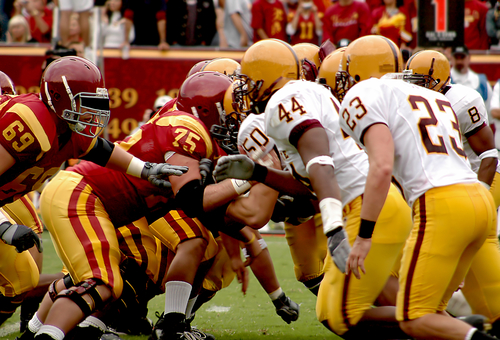
A Sporting Chance: How to Use Sports to Teach Math and Science
 Professional sports today sometimes seem more about analytics than about the actual game. In baseball, for instance, computers spit out information on where and how to defend hitters, and stats like OPS (on base + slugging), OBP (on base percentage), and ERA (earned run average) are common in the lingo of the game. Statistician may be the most valuable position in an organization these days (yes- math can serve you later in life!) In baseball, there is even the Pythagorean expectation, which predicts a team’s expected winning percentage based on runs scored and runs allowed. Likewise, sports such as football, basketball, soccer, and hockey also have their own unique mathematical languages. Managers and coaches rely heavily on the use of these in how they play the game. And even casual fans are familiar with how these numbers and stats play into the sport. This gives us a unique opportunity to teach math in a more enjoyable and relatable way.
Professional sports today sometimes seem more about analytics than about the actual game. In baseball, for instance, computers spit out information on where and how to defend hitters, and stats like OPS (on base + slugging), OBP (on base percentage), and ERA (earned run average) are common in the lingo of the game. Statistician may be the most valuable position in an organization these days (yes- math can serve you later in life!) In baseball, there is even the Pythagorean expectation, which predicts a team’s expected winning percentage based on runs scored and runs allowed. Likewise, sports such as football, basketball, soccer, and hockey also have their own unique mathematical languages. Managers and coaches rely heavily on the use of these in how they play the game. And even casual fans are familiar with how these numbers and stats play into the sport. This gives us a unique opportunity to teach math in a more enjoyable and relatable way.
At a basic level, the following link shows how you can teach the simplest of mathematics using football. For instance, basic addition can be modeled (touchdown (7) + field goal (3) = 10 points.) From there, football can be used to teach percentages, averages, and probability. Find more information here:
http://www.brighthubeducation.com/teaching-methods-tips/128765-using-football-to-teach-math/
For the higher grades, check out this incredible article from The New York Times’ Teaching and Learning Network. In it, the authors offer comprehensive information about sports analytics and how it can be integrated into the classroom, including gathering data, analyzing data, visualizing data, explaining the significance of data, and applying analytics. This article covers all the major sports and even includes a collection of graphics displaying various sports data. This is a great primer for anyone interested in utilizing sports to teach conceptual math:
So how about some actual exercises that can be employed in the classroom to illustrate the role that math plays in sports? The next link contains four “webquests,” missions that include calculating a hitter’s batting average, making predictions about the NBA draft lottery, and graphing data for a sporting event. This is a good resource for putting the math/sports connection into action:
http://www.mathgoodies.com/Webquests/sports/
Let’s take it one unexpected step further: how about using sports video games to teach math and science concepts? Believe it or not, it’s being done. In 2014, Discovery Education partnered with EA Sports and the NFL to create a special version of the game “Madden NFL” that teaches math and science to middle-schoolers. The idea is to have students rely on math and science concepts in order to complete plays: “On offense, for instance, students will need to decide upon the angle and velocity at which a quarterback should throw to a pass-catcher. While playing defense, students must use probability to determine which formations to choose based on their opponents’ downs and distance.” Video games that don’t “rot your brain:” wow, what a concept! Get the whole scoop here:
http://blogs.edweek.org/edweek/DigitalEducation/2015/11/using_madden_football_video_ga.html
If you’re still not sold on this idea, here’s a real-life example of utilizing math and sports in education. At Woodward Elementary in Atlanta, students keep track of college football scores and records and convert the raw data into fractions and percentages. This is an amazing way to engage students. Read the full story here:
http://www.foxnews.com/us/2014/01/06/elementary-school-uses-college-sports-to-teach-math.html
Written by Phil Lane
Contact us today to learn more about how our tutors can help your child improve their math skills!
Tag:teaching



